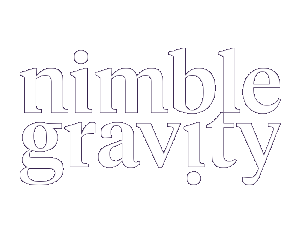There’s a lot of talk about how AI is going to transform your business. Solving previously unsolvable problems or problems that were really difficult to solve. But just because something can be done with AI doesn’t mean the solution will be adopted and used.
Unfortunately, far too many AI initiatives turn into what we call Abandoned Implementation (see what we did there?).
The POC was exciting, the pilot looked awesome. The model or whatever was happening performed well.
And then… nothing. Crickets. Nobody changed how they worked. Nobody measured the results. And nobody got value. Or maybe the value was there but it can’t be attributed to the solution.
If you want your AI project to actually do something, to unlock meaningful value, you need to treat it like any high-impact business change. Here’s how.
Value Doesn’t Appear by Magic—You Have to Build Toward It
The promise of AI is often massive efficiency gains or smarter decisions. But you don’t get to those outcomes just by training a model. You get there by building a new process around it. AI doesn’t create value on its own; it amplifies the value of well-designed operations.
Every AI initiative needs a value roadmap. What are we trying to improve? How do we measure success? What happens if this thing works? That’s not just tech, it’s ops, process design, and sometimes good old fashioned change management.
For example, if you implement AI to speed up customer service responses, the goal isn’t just faster replies. It’s better customer satisfaction, higher retention, and potentially upselling opportunities. Without a clear roadmap and an operational plan to support the AI’s outputs, you risk optimizing a tiny piece of the business while missing the broader impact.
Alignment between technical teams and business stakeholders is crucial. Early-stage collaboration ensures that the AI solution is directly tied to measurable business goals rather than becoming an isolated technology experiment.
Start with a Baseline, or You're Just Guessing
You can’t prove value if you don’t know what "before" looks like. One of the most common reasons AI projects stall out is because no one captured a solid baseline of performance or outcomes. Without a clear point of comparison, it's impossible to demonstrate improvement or return on investment.
There are lots of ways to address this – here are two favorites:
- Baseline → Deploy → Measure After: Before you deploy AI, document existing performance metrics. For instance, if you’re implementing AI to improve sales forecasting, track the current forecast accuracy rate. Or get a rough idea how long people are working on a specific task and how many times per day/week they’re doing it. After deployment, measure again.
- Test and Control: Run an A/B test or apply AI in one part of the organization and compare it to another similar part without AI. This way, you can directly attribute performance differences to the AI system, rather than relying on subjective judgment.
Either approach works. What doesn’t work is “We think it helped?” Hunches and anecdotal evidence aren't enough when it comes to enterprise transformation. The plural of anecdote isn’t data, and leaders need data they can trust to justify further investment and scale successful initiatives.
Capturing a baseline also empowers teams to fine-tune and optimize over time. Continuous measurement turns AI deployments from one-off projects into ongoing performance engines.
If the Process Doesn’t Change, Nothing Changes
AI isn’t just a magic silver bullet, it’s a pretty seriously awesome new tool for changing how work gets done. If your team is still doing things the same way, even after you deploy the tech, you probably won’t see results.
When brushing your teeth, ponder these:
- What tasks should the AI take over? Clearly define what the AI is responsible for and where human intervention is still necessary.
- What decisions are now informed or automated? Identify decision points that can be optimized by the AI and adjust workflows accordingly.
- What’s the human’s new role in the loop? How does AI enable them to do new, higher-value work? To focus more on exceptions, strategy, and creative problem-solving?
Without the answers to this pondering, you’re likely just layering complexity on top of an unchanged process. AI as a tool that can solve previously unsolvable problems or make solvable problems much easier to solve, should simplify and elevate operations, not complicate them. Successful implementations reimagine workflows end-to-end, ensuring that every team member understands their new role in an AI-augmented environment.
Sometimes, this requires tough conversations. Legacy processes, comfort zones, and entrenched habits need to be reevaluated. Change isn't optional, it's essential.
Change Management Is the Part Everyone Forgets (and Pays For Later)
Sure, some AI project failures are technical, but we’d wager that a bunch are organizational. Resistance, confusion, lack of trust, poor communication... the usual suspects.
Change management isn’t a nice-to-have. It’s a core part of AI delivery. You need:
- Clear communication about what’s changing and why: Transparency reduces fear and uncertainty. Share the vision early and often.
- Training (not just how-to, but when-to and why-to): Users need to understand not just how to use the AI, but why it matters, when to trust it, and when to escalate issues.
- Iteration and feedback loops from users: The first version of any AI system won’t be perfect. User feedback is essential for refining and improving performance.
“Build it and they will come” is not a strategy. It’s a line from a movie. And it doesn’t work. Expecting employees to embrace a new system without guidance, support, and incentives sets AI projects up for failure.
Successful AI change management recognizes that people are central to technology adoption. Emotional intelligence, empathy, and leadership are just as critical as technical prowess.
AI Makes the Stakes Higher—and the Potential Bigger
AI isn’t like installing a new dashboard. It’s not just analytics. It’s autonomy. It can act, adapt, and sometimes surprise. That means you can unlock massive value—but it also means people will need to change how they make decisions, how they trust systems, and how they work with the tech.
With that much power, your implementation strategy needs to rise to the challenge. You’re not just installing a tool; you’re reshaping the way your organization operates.
When AI is properly integrated, it enables:
- Faster decision-making: AI can surface insights in real-time, allowing quicker reactions.
- Smarter operations: Predictive models anticipate issues before they arise.
- Higher scalability: AI can handle growing workloads without proportional increases in headcount.
But with great power comes great responsibility (another line from a movie). Organizations must establish clear governance around AI’s use, ensure ethical considerations are embedded, and prepare teams to act as responsible stewards of AI-driven decisions.
Building trust in AI systems is paramount. Users must feel confident that the AI is reliable, fair, and aligned with organizational goals.
Final Word
If your AI initiative is stuck or forgotten, it probably wasn’t the model that failed. It was the implementation.
Don’t let your AI turn into Abandoned Implementation. Treat it like a real transformation project: measure it, support it, and build the new ways of working that bring it to life.
At Nimble Gravity, we’ve seen the difference that disciplined implementation makes. We know what it takes to move from promising pilot to operational success.
If you’re ready to get AI working for real in your organization, let’s talk. We’ve seen what works (and what doesn’t), and we’d love to help you build an AI future that delivers real, measurable impact.




